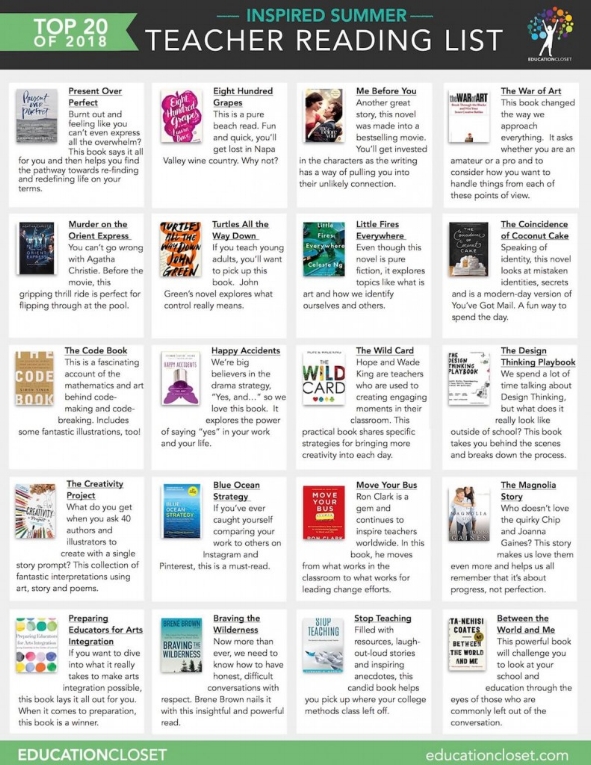Summer Reading
Guest User
Welcome summer! TXTS 4 Teachers will be on vacay with you, so this one is about sending you off with your summer needs in mind.
I know you've been waiting all year to get started on your summer reading. You may already have your list all planned out. Something beachy? Something dystopian? Romantic? How about instructional strategies, engagement, or differentiation? I did some digging to help you plan your reads.
The Unshakable Summer Book Club (Angela Watson) meets via FB from July 17th-August 5th. This book club is over 9000 strong and provides free resources. This year's read--Enjoy teaching every day...no matter what.
Get the Inspired Summer Teacher Reading List's Top 20 of 2018. With titles like, The Magnolia Story with Chip and JoJo, Murder on the Orient Express by Agatha, and Preparing Educators for Arts Integration, you are sure to find something that floats your boat.
Also available from Google Play, Chromecast, Amazon and Apple TV.
Are you a digital reader? Hoopla is for you. Get 24/7 access with your library card. You can check out audiobooks, movies, TV shows, music, and more. Get your kids hooked on reading with Hoopla for Kids as well.












